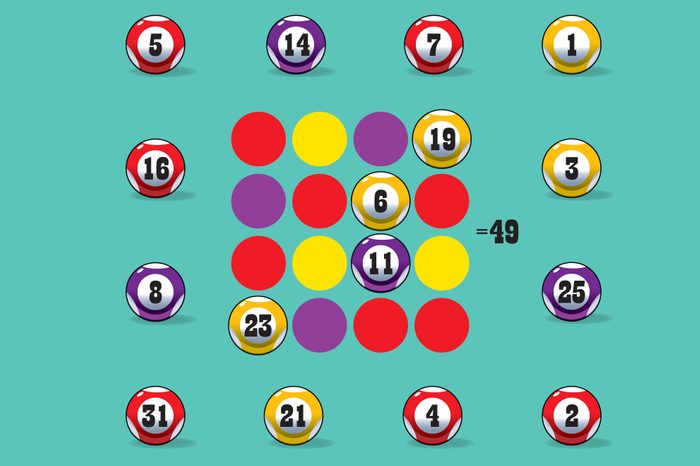
Time to test your brain!
These hard math problems aren’t straightforward arithmetic. They’ll challenge you to look at the “problems” a different way and test your logic and problem-solving skills while you’re solving. And if math isn’t your strong suit, take heart—most of these hard math problems just use very simple numbers with only basic operations—addition, subtraction, multiplication, and division. What makes them a challenge is often examining the problem to find out the “trick,” or the pattern and the way the numbers relate to one another. Others require a “fill-in-the-blank” technique that requires you to use trial and error and work backward. Time to put your brainpower to work! Maybe brush up on these easy math tricks you’ll wish you’d always known before you get started.
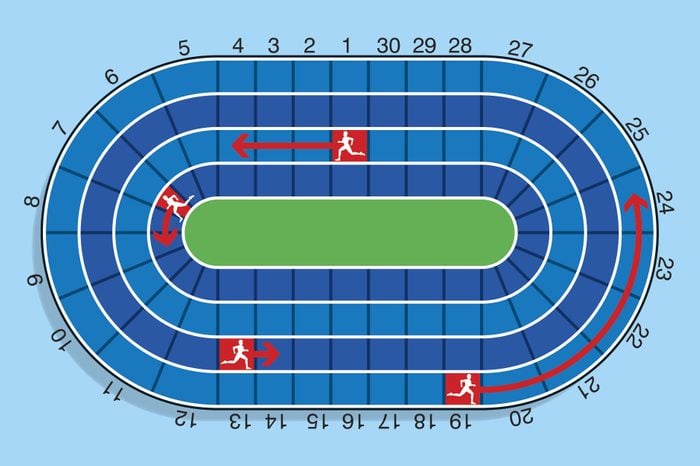
Track and field
If each of these runners travels the indicated number of spaces in the same amount of time, at which numbered spot will all of the runners be next to one another?
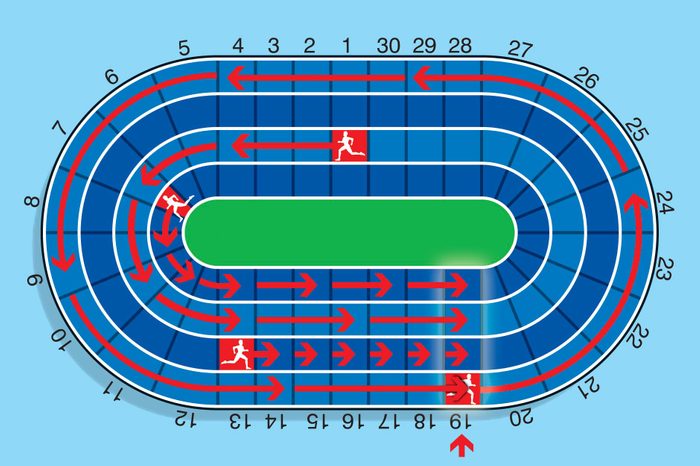
Answer: Space 19
At first, it seems like this will take forever to figure out—but, in actuality, the runners will all be lined up after only six “moves”! Make a chart indicating where each runner will be after each “move.” To figure that out, all you really need to do is add! Just add the number of spaces each runner advances—three, two, one, and five—to the number they’re already at, going back to Space 1 after 30. Sure enough, they’ll all reach Space 19 at the same time. In the mood for something harder? Keep going—or try these difficult brain teasers that will leave you stumped.
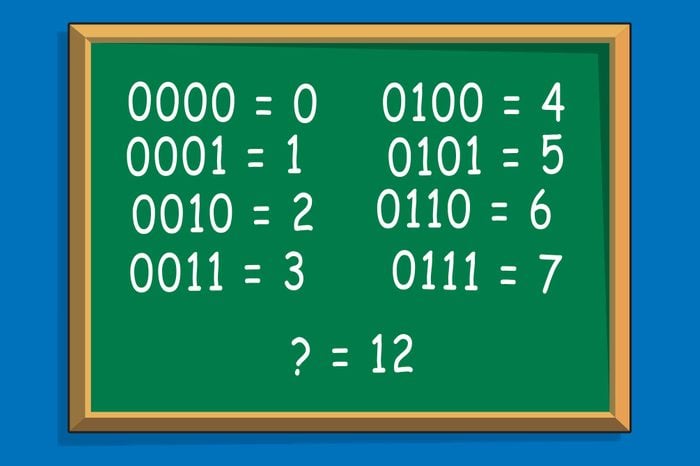
Ones and zeros
Below, you’ll see the binary notation for the decimal numbers 1 through 7. Following the pattern, what is the binary notation for the decimal number 12?
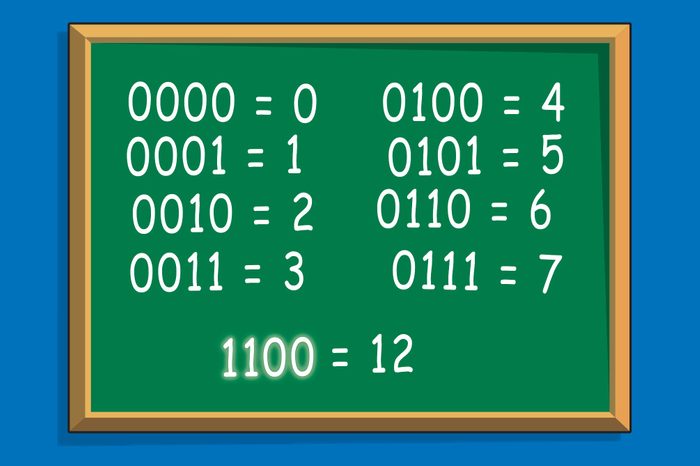
Answer: 1100
If you went to five digits for this one, you did it wrong (and that’s OK; that’s what I did on my first attempt)! What makes this difficult, and different from most hard math problems, is that it’s so unlike how we’re used to looking at numbers, especially in a sequence. Basically, you’re moving through all of the numbers you can make with just ones and zeros, starting with the least (0, represented as four 0s) and getting greater. But you’ll always have four digits, so until you have a four-digit number (1000), the digit(s) to the left of the highest place will be a zero. So the question gives you up through 111 (written as 0111 to be four digits), and since it’s representing 7 and you’re trying to reach 12, just go through the next biggest numbers that use only 1s and 0s. So 8 will be 1000, 9 will be 1001, 10 will be 1010, 11 will be 1011, and 12 will be 1100.
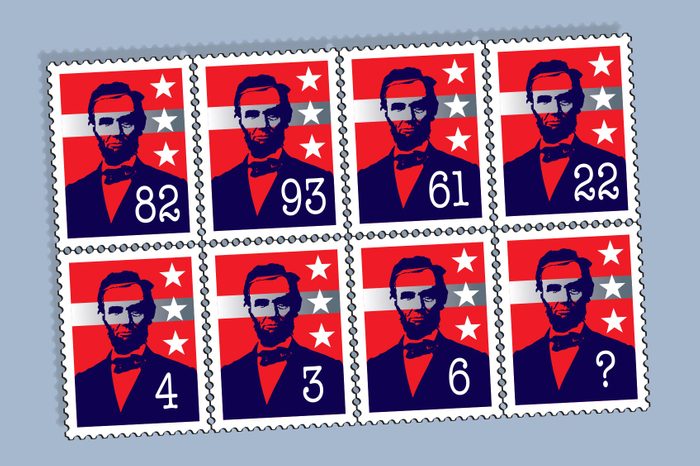
Face value
Which number should be on the bottom left stamp? (Hint: It’s a one-digit number.)
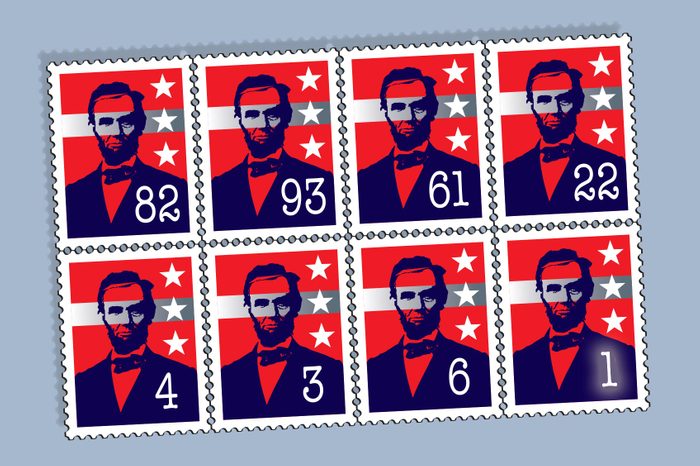
Answer: 1
Many of these hard math problems don’t require doing difficult math as much as they require identifying relationships between groups of numbers. In this case, don’t look at the horizontal rows of stamps but at the vertical pairs of stamps. The number in the ten’s place of the top stamp, divided by the number in the one’s place of the top stamp, equals the number on the bottom stamp (8 divided by 2 is 4 in the leftmost pair of stamps). So, for the last pair, 2 divided by 2 is 1.

Energy saver
A transport company is greatly reducing the amount of oil it uses—but by how much? What number should be below the final barrel? Plus, try out these brain games that boost your brainpower.

Answer: 2
Tricky—this one doesn’t require arithmetic at all! And thankfully, because those are some wacky, large numbers would not be fun to compute with. Instead, look for patterns in the numbers themselves. The following pattern presents itself: Each number (with the exception of the first, which is arbitrary) is the digits of the number before it, minus the first one, reversed. For instance, the first number is 19247. Take away the first digit, 1, and reverse it, and you get 7429—which, sure enough, is the second number. The number before the empty spot only has two digits, so when you remove the first one, 4, you’re left with just 2. No need to “reverse” a number with only one digit, so there’s your answer.
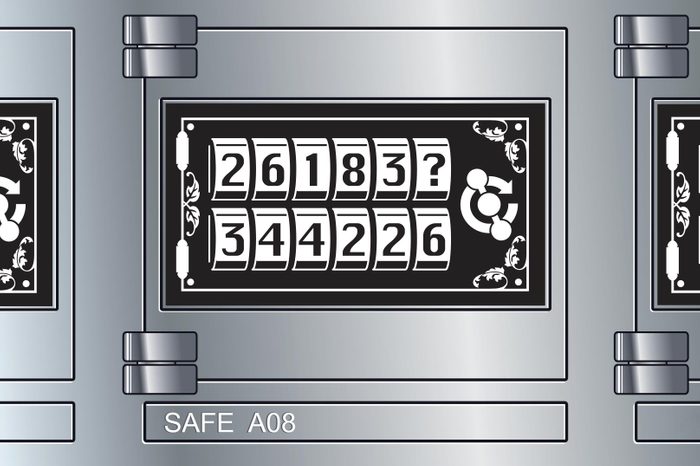
Safe code
What’s the digit you need to input in the space with the question mark to complete the code for the safe? Here’s a hint to save you some stress: The “Safe A08” text on the bottom is meaningless, so don’t waste time trying to figure out if that will help you get the answer!
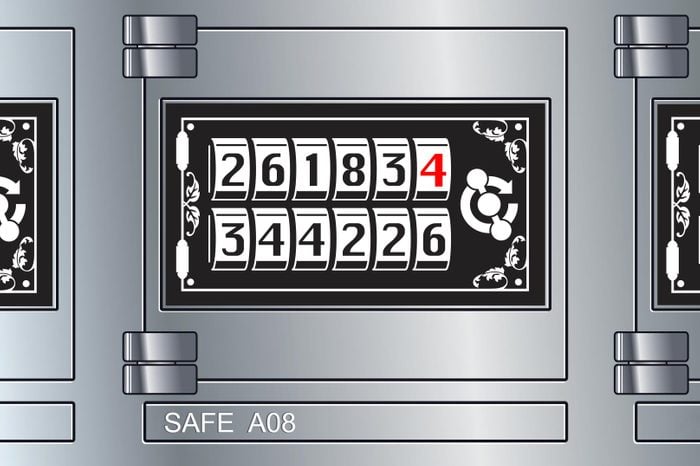
Answer: 4
Here’s another thing you need to know to get this answer: Only the groupings of four numbers, two on top and two on the bottom, relate to one another; the entire top and bottom rows are not a sequence, for instance. Think of it as three pairs of two-digit numbers.
So what’s the pattern? Well, the numbers in the ten’s place are being multiplied by two to yield the number in the one’s place of the other two-digit number. For instance, in the first pair, you multiply the 2 by two to get the 4 diagonally across from it, and the 3 to get the corresponding 6. And the final pair actually mirrors the first pair; you’re also multiplying a 2 to get a 4!
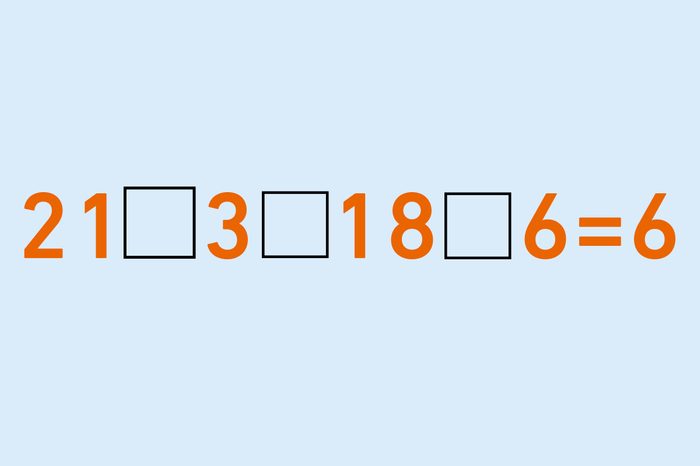
Symbol sums
How can you make this equation accurate by using three of these four mathematical symbols: + – × ÷ (add, subtract, multiply, and divide)? NOTE: For this problem, order of operations doesn’t apply; you’d actually be doing each operation from left to right (you don’t have to multiply or divide first, etc).
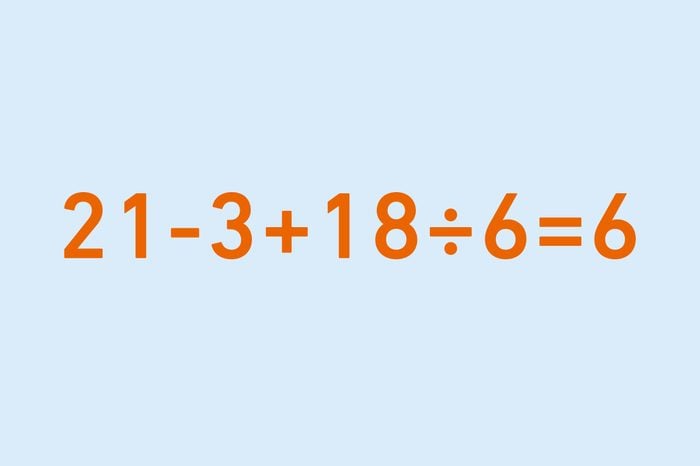
Answer: – , + , ÷
Here is the correct equation: 21 – 3 + 18 ÷ 6 = 6. Twenty-one minus 3 is 18, then add 18 to that to get 36. Then divide that by 6 to get the correct answer, 6! If you prefer words over numbers, try out these seriously tricky word puzzles.
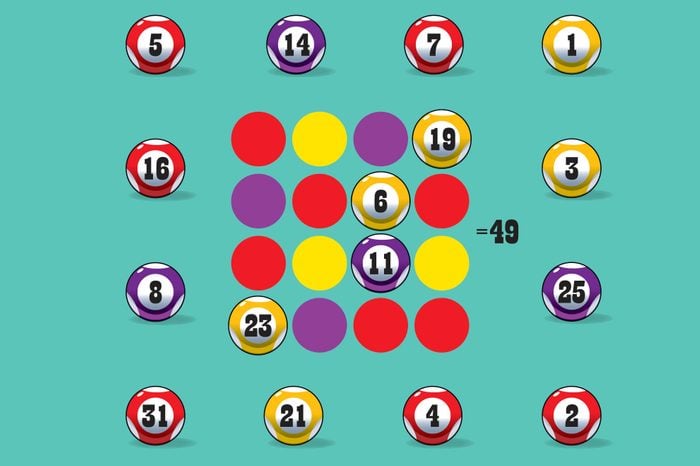
Rack ’em
Put these billiard balls around the outside into their correct spots, of corresponding colors, so that the sum of every column, row, and diagonal is 49. While you’re pondering this, try out this color-identifying test that only 1 percent of people can ace.
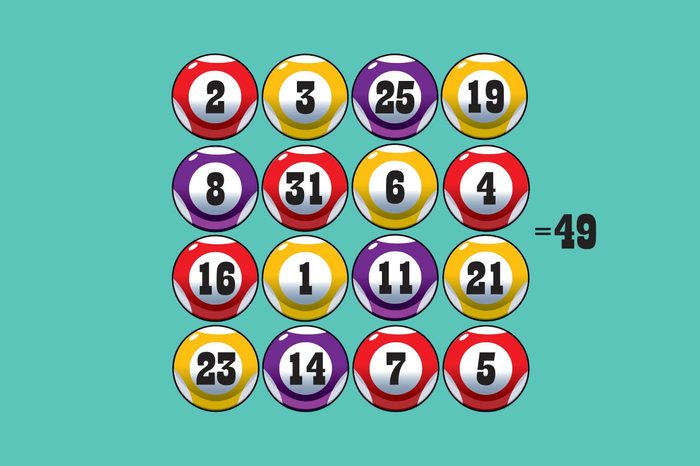
Answer:
Sometimes hard math problems are just about trial and error and eliminating possibilities that don’t work; it’s a little like Sudoku in that way. But there is a little bit of strategy to it; for instance, for the leftmost column and the bottommost row, you already have a number that ends in 3, so you’ll need the sum of the other three numbers to end in 6. And tackling the bottom-to-top diagonal first will really help; it’s only missing one ball, so you can immediately figure out what that empty spot is. You also know that you can’t put the 25 ball or the 31 ball in any row, column, or diagonal with the 23 ball; they’d immediately make your sum too big.
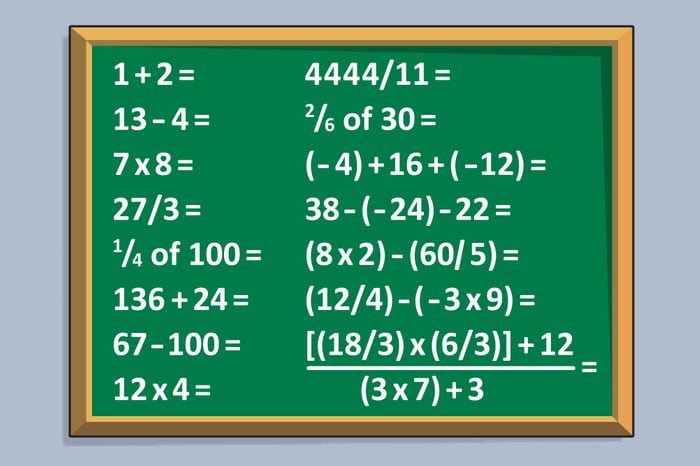
Number music
For this math exercise, see how fast you can solve these not-so-hard math problems—while blasting your favorite music. Oh—and try not to use a calculator!
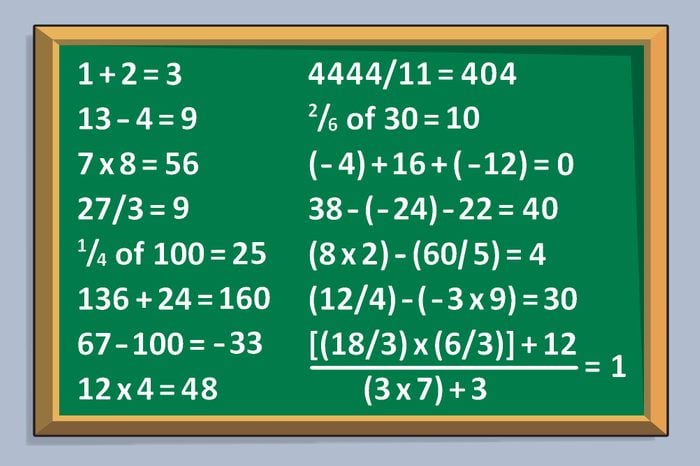
Answers:
Most of these are just simple math, or even common knowledge (a fourth of 100)!
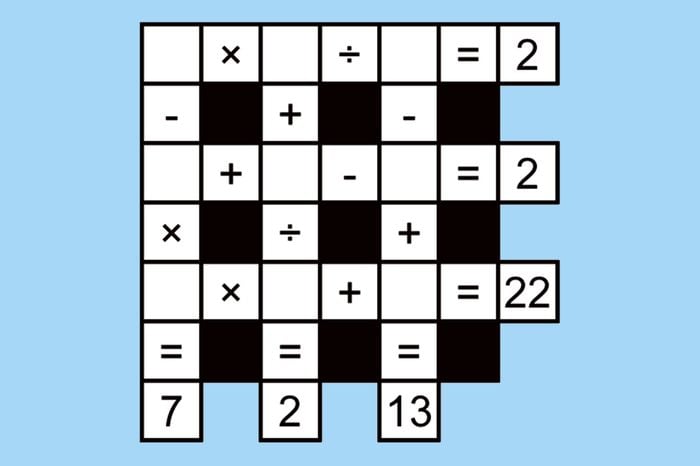
Do the math
For this one, fill in the numbers 1 through 9, using each only once, to make all of the vertical and horizontal equations correct.
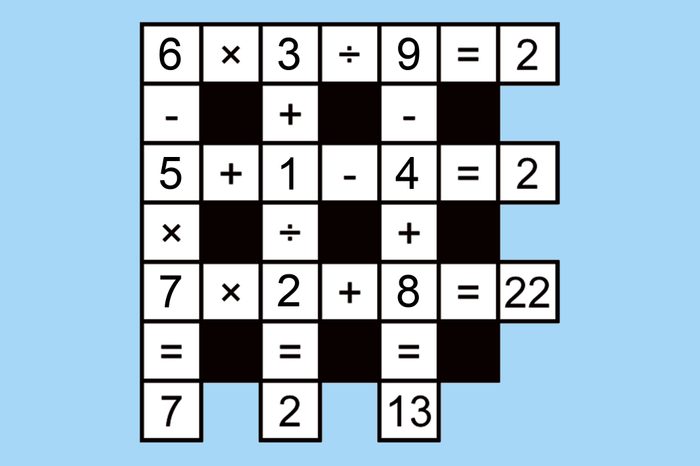
Answers:
Here’s another one that probably just takes some time and several incorrect guesses.
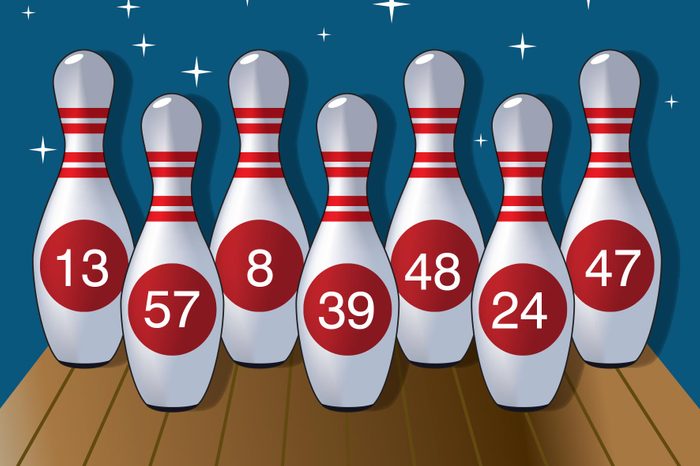
Strike
Which pins do you have to knock over to get a total of 100 points?
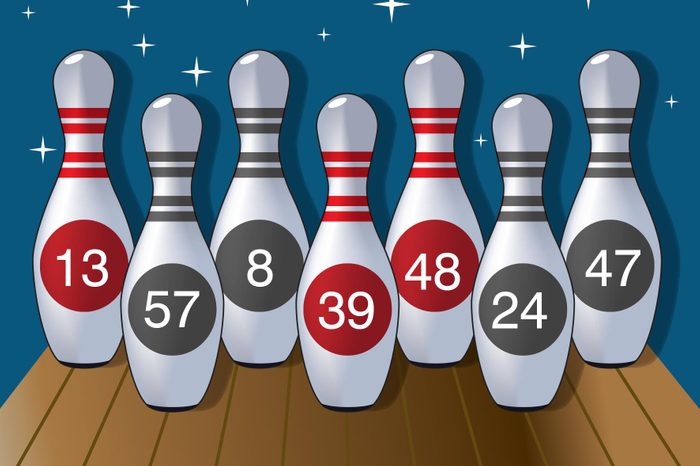
Answer: 13, 39, and 48
This one is tricky because it doesn’t tell you how many pins you need to knock over, so it could be any combination of the pins. But that’s the only combo that adds up to exactly 100! Test your visual skills by seeing if you can identify these everyday objects by their close-up pictures.
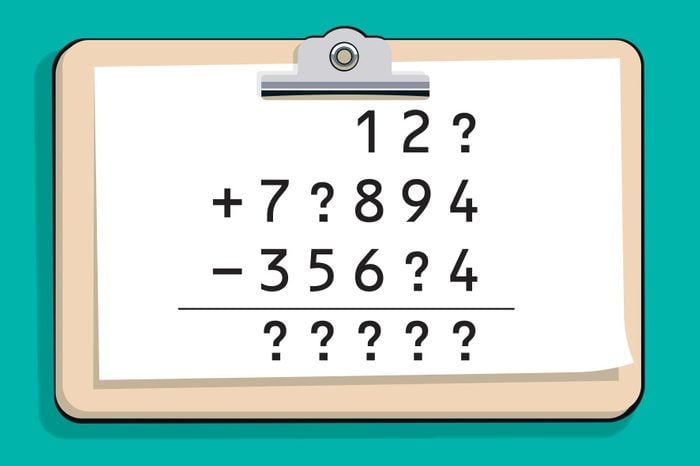
Maximize
Which three numbers (0 through 9) do you need to replace the question marks with to have the answer be the largest number possible? (No repeat numbers.)
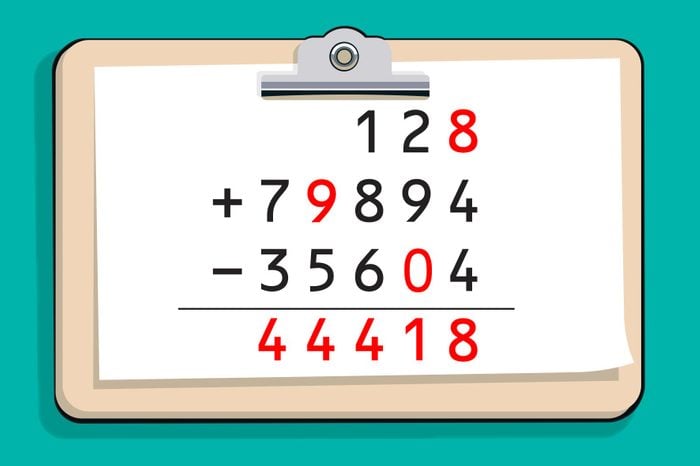
Answer:
The largest possible solution for this math problem is 44418, and to yield that result, you need to add 128 to 79894, and then subtract 35604. Though this problem might seem mind-boggling at first, the answers really do make sense; you want to get the largest possible sum and then subtract the smallest possible number from it. If you need a break from the numbers, check out these tricky riddles to test your smarts.
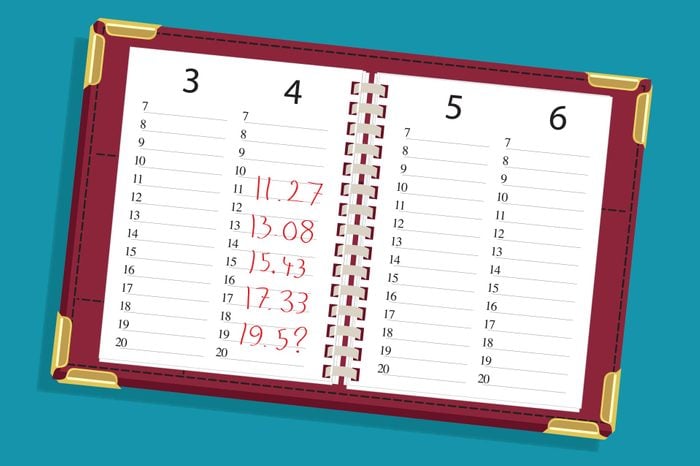
Diary time
What time is the last appointment?
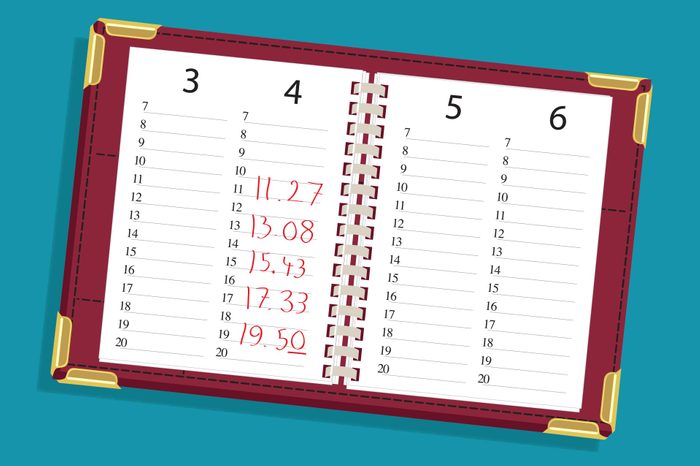
Answer: 19.50
For this answer, you’ll quickly notice a pattern if you add up the digits in each time; ignore the decimal points. The digits in the first “time” add up to 11; the second, 12; the third, 13; and, well, you’ve now got a seriously simple pattern. So you know that the digits in the fifth time must add up to 15. And when you add them…they already do! So the question mark must be replaced with a 0, to keep the sum at 15. Did you know about these math lessons you’ll actually use in real life?
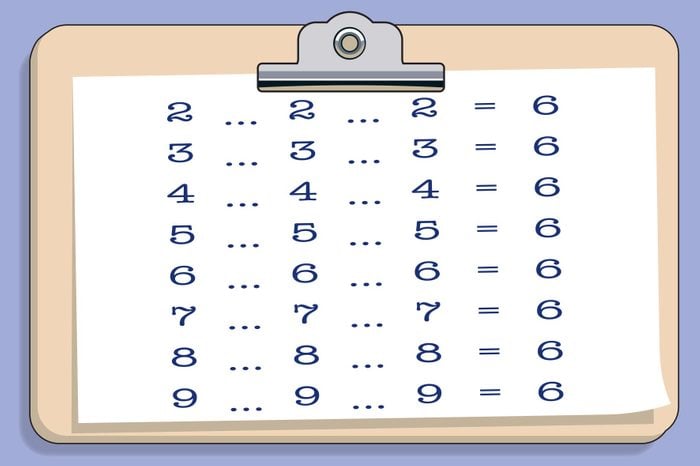
Same same
Just by adding the symbols + – × ÷ √ (add, subtract, multiply, divide, and square root), can you make all of these equations true? The symbols don’t just have to be where the ellipses are; they can be before the first number too (though there won’t be any negative numbers). And there can be more than one symbol in each ellipsis spot. Finally, you’re allowed to group pairs of operations together with parenthesis.
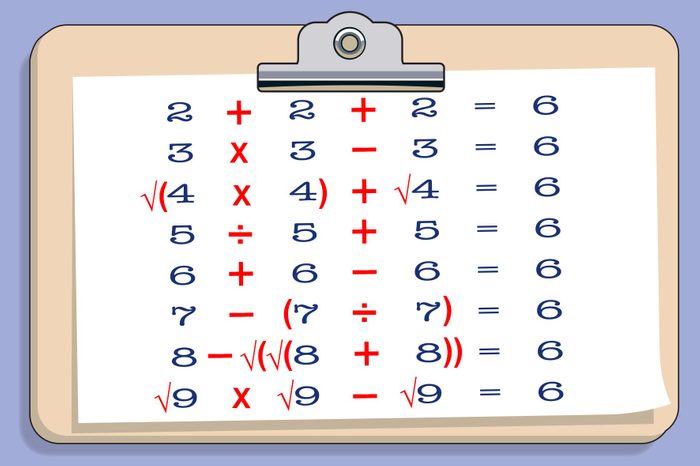
Answers:
OK, yeah, that might have been the hardest of these hard math problems! Square roots can make things extra confusing, and it takes some serious brainpower and ingenuity to figure out where to place those parentheses. Need a break from these hard math problems? Get a chuckle from these clever math jokes.
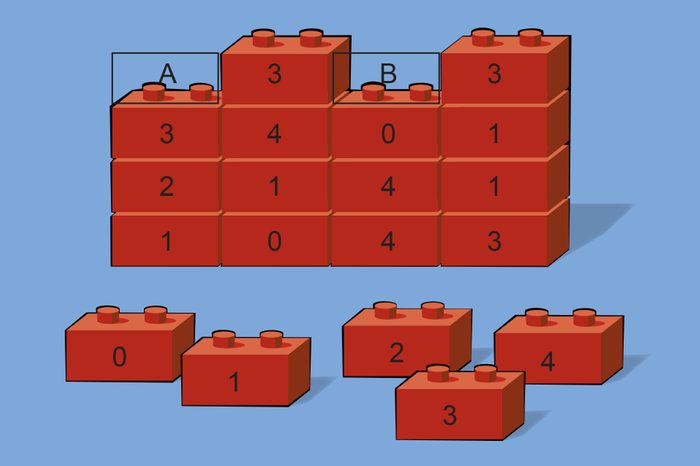
Build it
Which blocks should go in Space A and Space B?
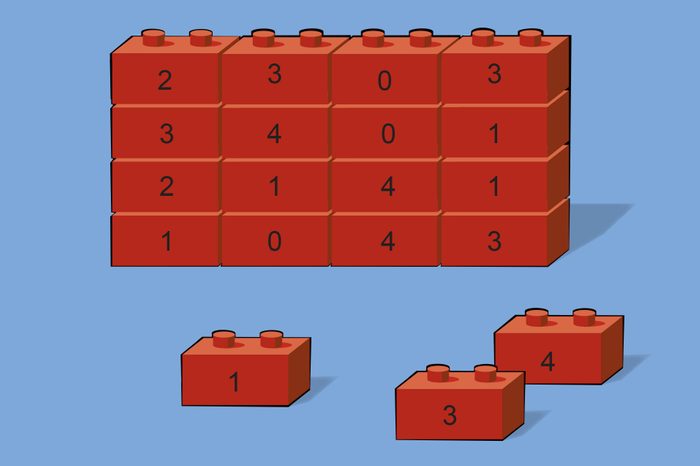
Answer: Block 2 in Space A and Block 0 in Space B
This is one of the slightly easier of these hard math problems (and a nice break after that last one, frankly)! You might notice that all of the complete horizontal rows and complete vertical columns add up to 8. Then, you know exactly which numbers you need to make the incomplete rows equal 8, too. See how you fare with this elementary school–level math test.
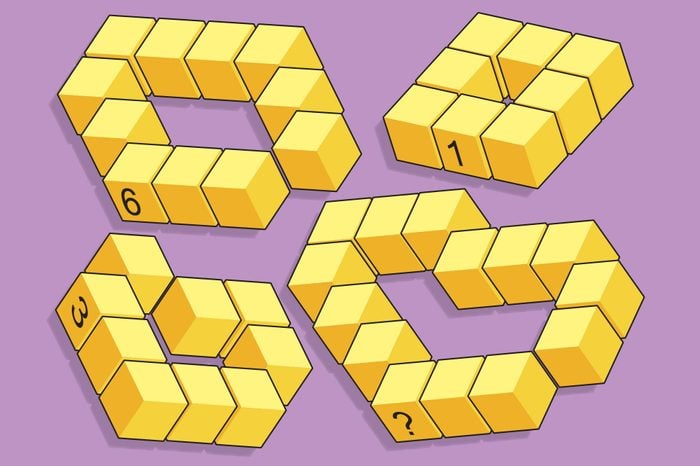
Number blocks
What number should replace the question mark on the bottom right loop?
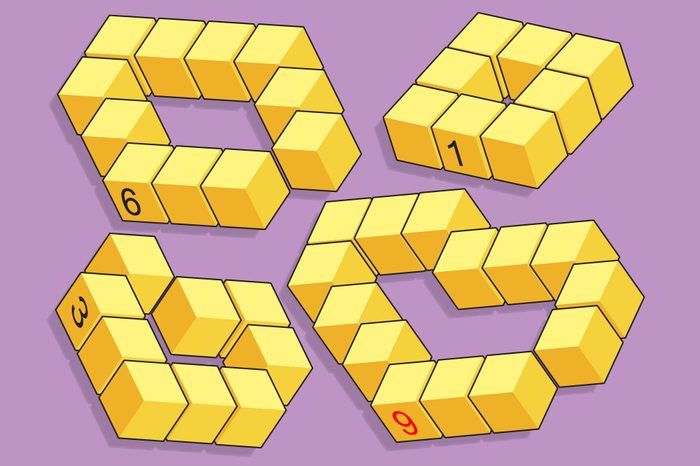
Answer: 9
And we’re back to a really tricky one! The number on each loop is the number of blocks that could fit in the middle. That one was seriously tricky—just like this “simple” math question for kids that’s stumped the Internet.
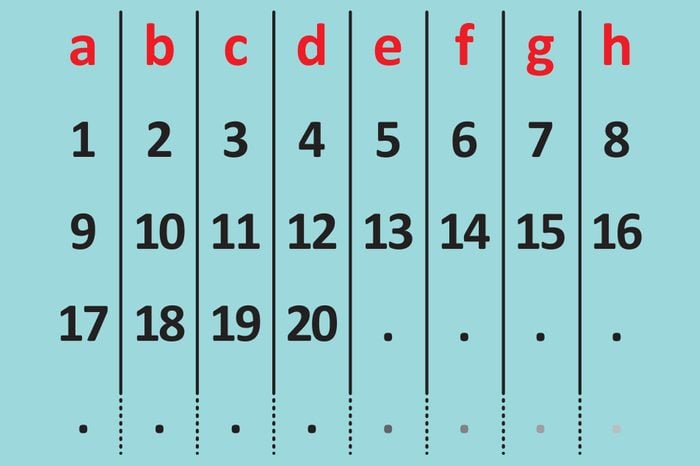
Place 100
Without writing out every single number, can you figure out which letter the number 100 will be underneath?
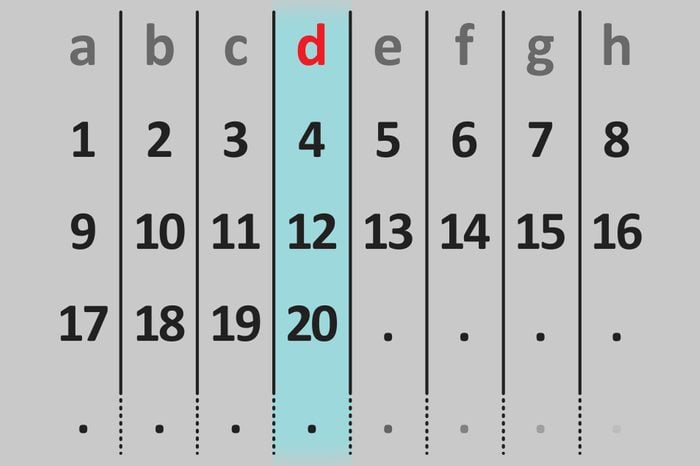
Answer: Letter d
The way I figured this out is by thinking about how there are eight columns, so after eight numbers, a new row starts with the letter “a” again. So I thought about multiples of ten (since 100 is one). Because the rows restart after eight numbers, each multiple of ten will be two “letters” after the previous multiple of ten. For instance, in the table, you can already see that 10 is under the letter “b” and 20 is under the letter “d.” So 30 will be under “f,” 40 will be under “h,” 50 will circle back to “b,” and so on.
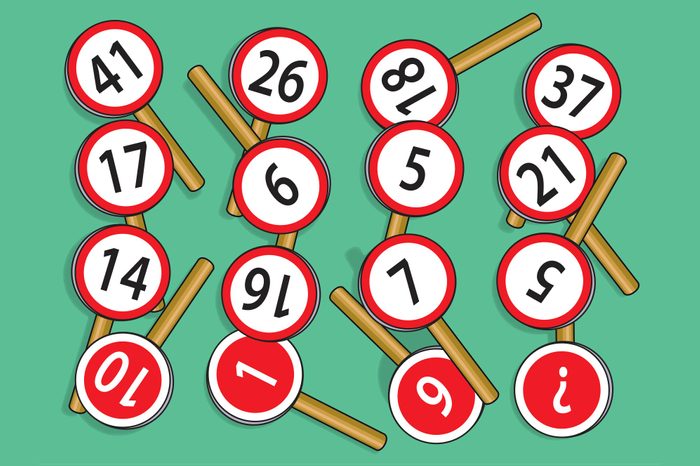
It’s a sign
What number should go on the bottom right sign?
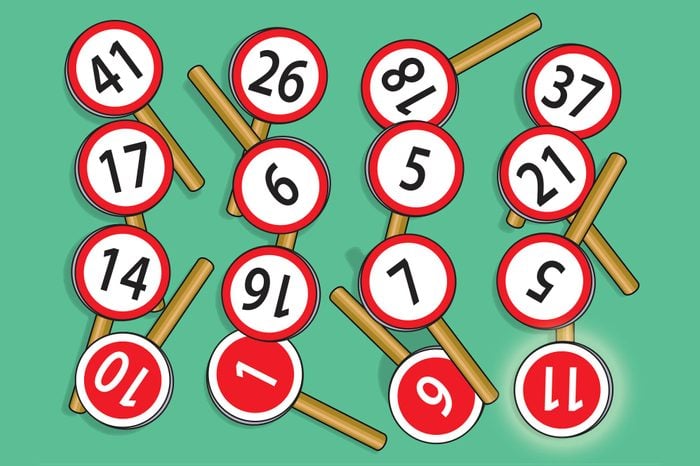
Answer: 11
For this one, all you’re doing is putting minus signs between the top and second signs and between the second and third signs, and then an equal sign between the third and bottom signs. So you’re subtracting, and then subtracting again, to get the bottom numbers. So in the first column, you do 41 – 17 – 14 to get 10. (You can also think of it as adding the second and third signs together than then subtracting that from the first sign.) In the final column, you subtract 21 from 37, and then subtract 5 from that, to get the missing number of 11. If you could figure these out, try out some tricky math riddles only the smartest can get right.
